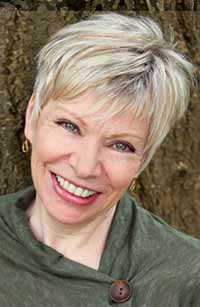 Karen held the first baby chicks in her hands five years ago when they were just two days old; the second clutch joined the flock two years later, then the final four arrived four months ago. She was the mom, and they followed her and looked to her for direction.
Karen held the first baby chicks in her hands five years ago when they were just two days old; the second clutch joined the flock two years later, then the final four arrived four months ago. She was the mom, and they followed her and looked to her for direction.
Karen now wondered what could be done to encourage the two groups to commingle. The flock enjoyed roaming their large backyard, though the younger girls quickly removed themselves from the area when their older sisters approached. They were otherwise content with their living arrangement with its two separate pens. Their response came quickly, “They didn’t roll out the red carpet when we arrived.” I scanned the 10 hens and chicks to determine who was speaking as I had just arrived and was still trying to keep names, ages, and breeds straight.
One of the older hens commented nonchalantly that “this was a neighbor issue. You may live next door, but that doesn’t mean you would walk into your neighbor’s house. Even if you were part of the same family, you wouldn’t enter without being invited.” Respect, boundaries, and the flock’s pecking order were the primary issues.

Animal Intuitive Darcy Pariso
As Karen shared more about their lives, one of the hens began pecking on her leg. While the others retreated, Queenie, a five-year-old golden black Maran, continued pecking until she was hand-fed more mealworms. Karen asked why she pecked on buckets and chairs? Queenie responded it was soothing, and she enjoyed the sound and sensation the vibration created. She added she liked to sway to the music coming from the nearby shed and found it healing. I watched Queenie push her head against Karen to let her know it was time to be petted; I learned the other hens and chicks also enjoyed this personal time with her.
Continuing the conversation later at home, Queenie shares she is a calm, self-assured bird who knows who she is, what she wants and why she is here. When I asked what that was, Queenie explains she’s here “to guide the others and take the lead. Some of us don’t care for this position, and it takes the pressure off them to know I’ve got their back. They look to me for reassurance when there’s a concern. I enjoy this role, and they appreciate me taking it. It’s a win-win.
We also have ‘girl talk’ as you like to call it. We are learning from you as much as you are from us. We are happy to live together in unison and respect. There’s a sense of safety that many of us haven’t experienced in a while. We are respected, and we know what to expect. We are free just to be. That is a privilege for many of us.” Queenie was the “Queen of the Flock” and handles her role admirably.
Marans originated in France then came to the U.S. with the return of American soldiers after World War II. They are known for their chocolate brown eggs and can lay up to 150-200 annually depending on their breed.
When Karen asked if it was the younger Americanas who were jumping the fence into the neighbor’s yard, four-month-old Mary and Chippie giggled like schoolgirls. “We are the more adventurous ones in the flock,” they admitted with glee. It was a game they played, and the thrill of being caught by the neighbor’s dog upped the ante. The older dog was sweet and harmless, and so were they. This brown chick with her golden head and black and white feathered accomplice would not go unnoticed.
Spotting Goldie, a Golden Laced Wyandotte, Karen asked if she was shy? Goldie replied she isn’t shy; she hasn’t been a chicken very often nor has she had much experience as one in this part of the world. She showed me images of being caged and also having freedom of movement in a large fenced area with hundreds of other chickens, with this freedom came fear.
The Golden Laced Wyandotte has been referred to as “starlets dressed in sequined gowns” and this certainly was true for Goldie. This hardy, large hen with her golden feathers edged in a glossy greenish black originated in Wisconsin.
Later at home, Goldie revealed her “current experience is pleasant” and the unaccustomed freedom and respect “exciting and a real confidence builder.” She continued, she “is extremely grateful to Karen and her family for her care and allowing her to be herself and learn about the world in this new way. I have been able to look at different relationships, personalities, and see things through a new lens, one that allows for many perspectives. I can do so because I feel loved and protected.” Much of Goldie’s focus is understanding the human to animal connection and relationship.
We end our visit with Fancy, who stepped forward after I asked if anyone would like to communicate with me later at home. Fancy is striking as she patiently poses for the camera, clearly enjoying herself as I try to capture the teal blue dispersed among her golden feathers. She is a double laced variety originating from Holland that is still rare in the U.S.
Fancy articulates, “I’m that girlfriend to confide in. That’s me, and I like myself. I balance the group.” She tells me it touched her heart hearing my comment on her beauty earlier, then taking pictures of her. She adds there is excitement among the flock over being in a newspaper. She asked that Karen read the article to them then asked if I would come back and learn more about them? I smiled happily and answered, “I would be delighted to!”
If you are interested in adopting chickens, please contact Pasados Safe Haven, http://www.seattletimes.com/seattle-news/pasados-safe-haven-takes-in-92-rescued-chickens/ .



